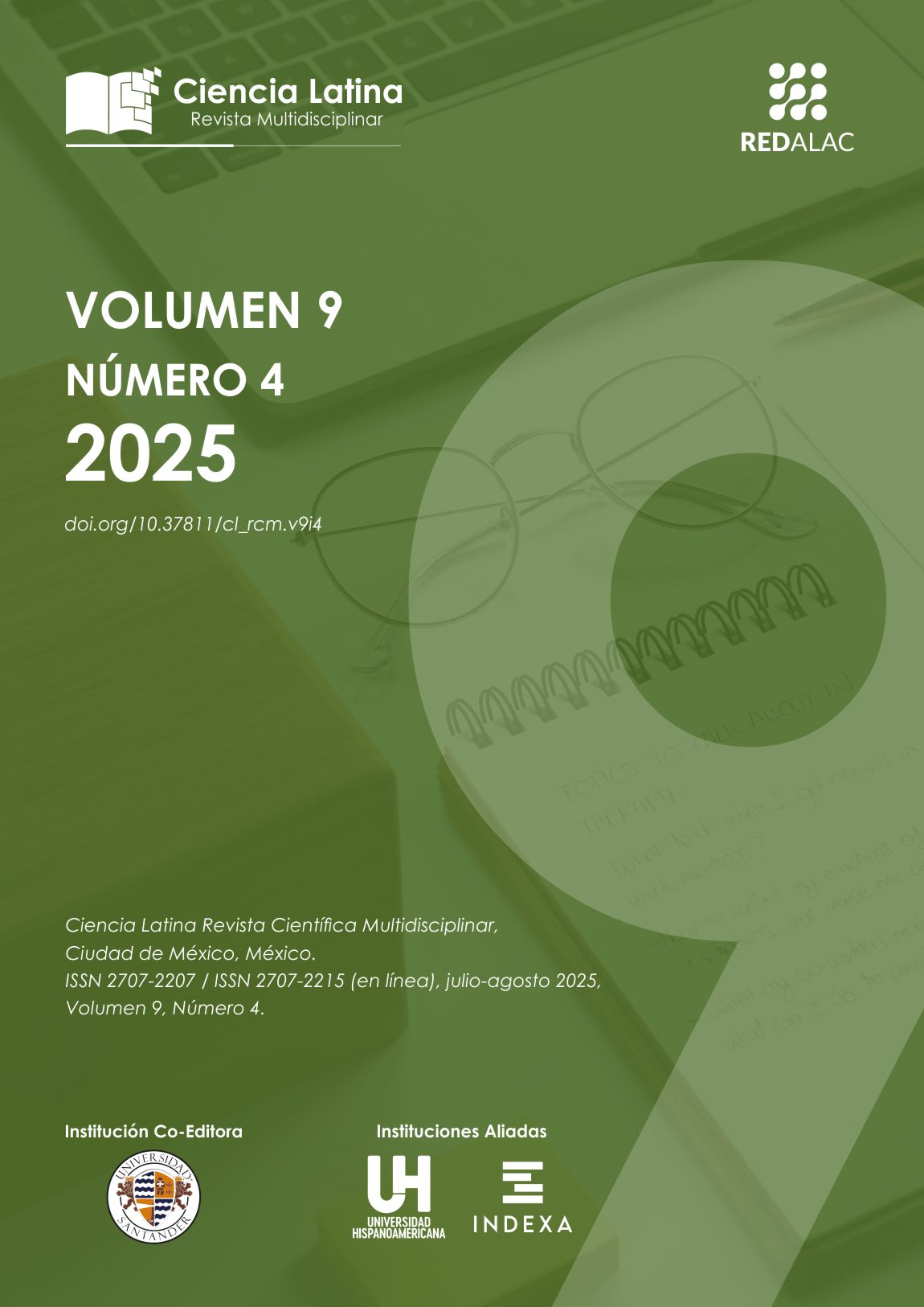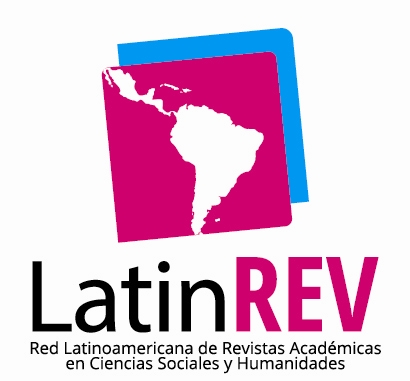Analysis of the Association between Nomophobia and Anxiety in Eighth Semester Medical Students of the Universidad Regional del Sureste
Resumen
The technological transformation of recent decades has radically changed how people access and process information, especially by integrating smartphones into everyday life. This phenomenon has brought with it both benefits and challenges, among which the emergence of nomophobia, as well as associated anxiety symptoms, stand out. The study was conducted with eighth semester medical students at the Universidad Regional del Sureste. The target population included all the students of that academic cycle, applying inclusion and exclusion criteria to guarantee its homogeneity. Two validated instruments were used for data collection: the Nomophobia Questionnaire (NMP-Q) and the Generalized Anxiety Disorder Scale (GAD-7). Data processing was carried out by descriptive and correlational statistical analysis, respecting the ethical principles of confidentiality. The results showed that 94.4% of the students evaluated presented some degree of nomophobia, manifesting behaviors such as compulsive telephone checking. It was identified that 66.5% of the participants reported clinically significant levels of anxiety. Statistical analysis showed a positive and significant relationship between levels of nomophobia and anxiety. There is a high prevalence of nomophobia and anxiety in medical students; it should be considered necessary to implement strategies for the prevention and management of excessive use of mobile devices, as well as to strengthen psychoemotional support in medical training.
Descargas
Citas
Alkalash, S. H., Aldawsari, A. K., Alfahmi, S. S., Babukur, A. O., Alrizqi, R. A., Salaemae, K. F., Al-Masoudi, R. O., Basamih, K. A. (2023). The prevalence of nomophobia and its impact on academic performance of medical undergraduates at the college of medicine, Umm Al-Qura University, Makkah City, Saudi Arabia. Cureus. 15(12), e51052. Doi: 10.7759/cureus.51052.
Bano, N., Khan, M. A., Asif, U., Beer, J., Rawass, H. (2021). Effects of nomophobia on anxiety, stress and depression among Saudi medical students in Jeddah, Saudi Arabia. J Pak Med Assoc. 71(3), 854-8. Doi: 10.47391/JPMA.983.
Bhattacharya, S., Bashar, M. A., Srivastava, A., Singh, A. (2019). NOMOPHOBIA: no mobile phone phobia. J Family Med Prim Care. 8(4), 1297-1300. Doi: 10.4103/jfmpc.jfmpc_71_19.
Charry-Jiménez, L. M., Rodríguez-Duque, M. P., Oviedo-Delgado, L. S., Quintana-Jaimes, M. A., Vargas-Rodríguez, L. J. (2024). Prevalencia de nomofobia en estudiantes de medicina de la UPTC 2023. SyS Uptc. 9(1), 15-28. Doi: 10.19053/uptc.2744953X.18344.
Daei, A., Ashrafi-Rizi, H., Soleymani, M. R. (2019). Nomophobia and health hazards: smartphone use and addiction among university students. Int J Prev Med. 10, 202. Doi: 10.4103/ijpvm.IJPVM_184_19.
De-Sola Gutiérrez, J., Rodríguez de Fonseca, F., Rubio, G. (2016). Cell-phone addiction: a review. Front Psychiatry. 7, 175. Doi: 10.3389/fpsyt.2016.00175.
England, B. J., Brigati, J. R., Schussler, E. E., Chen, M. M. (2019). Student anxiety and perception of difficulty impact performance and persistence in introductory biology courses. CBE Life Sci Educ. 18(2), ar21. Doi: 10.1187/cbe.17-12-0284.
Farhane-Medina, N. Z., Luque, B., Tabernero, C., Castillo-Mayén, R. (2022). Factors associated with gender and sex differences in anxiety prevalence and comorbidity: A systematic review. Sci Prog. 105(4), 368504221135469. Doi: 10.1177/00368504221135469.
Garcia-Portocarrero, P., Saldaña-Amaya, D. A., Miranda-Chávez, B., Flores-Cohaila, J. A., Copaja-Corzo, C. (2025). Validity and network structure of the Nomophobia Questionnaire in Peruvian medical students. Eduacación Médica. 26, 100989. Doi:
https://doi.org/10.1016/j.edumed.2024.100989.
Hartogsohn, I., Vudka, A. (2023). Technology and addiction: What drugs can teach us about digital media. Transcult Psychiatry. 60(4), 651-61. Doi: 10.1177/13634615221105116.
Kaviani, F., Robards, B., Young, K. L., Koppel, S. (2020). Nomophobia: is the fear of being without a smartphone associated with problematic use? International Journal of Environmental Research and Public Health. 17(17), 6024. Doi: 10.3390/ijerph17176024.
Köpetz, C. E., Lejuez, C. W., Wiers, R. W., Kruglanski, A. W. (2013). Motivation and self-regulation in addiction: a call for convergence. Perspect Psychol Sci. 8(1), 3-24. Doi: 10.1177/1745691612457575.
Chen Shih , J. (2025). Relación entre inteligencia emocional y rendimiento académico en estudiantes de nivel superior de Arequipa en la postpandemia . Ciencia Y Reflexión, 4(2), 648–667. https://doi.org/10.70747/cr.v4i2.299
Alcántara , R. L. (2025). Acompañamiento Pedagógico Estrategia Colaborativa. Ciencia Latina Revista Científica Multidisciplinar, 9(3), 7881-7886. https://doi.org/10.37811/cl_rcm.v9i3.18412
Agila Mocha, R. J., Vivanco Ureña, C. I., León Bravo, F. E., & Reyes Carrión , J. P. (2025). Software Educativos para el Proceso de Enseñanza Aprendizaje de Matemáticas en Bachillerato. Ciencia Y Reflexión, 4(2), 1341–1369. https://doi.org/10.70747/cr.v4i2.334
Chen Shih , J. (2025). Relación entre inteligencia emocional y rendimiento académico en estudiantes de nivel superior de Arequipa en la postpandemia . Ciencia Y Reflexión, 4(2), 648–667. https://doi.org/10.70747/cr.v4i2.299
Quelal Morejón , C. E., Rogel Calderón , A. S., Loaiza Dávila , L. E., & Maqueira Caraballo, G. D. L. C. (2025). Los juegos predeportivos: una alternativa para la inclusión de estudiantes con Trastorno del Espectro Autista (TEA) a la clase de Educación Física. Arandu UTIC, 12(2), 2169–2189. https://doi.org/10.69639/arandu.v12i2.1055
Guadalupe Beltrán , E. S., Palomeque Zambrano, J. Y., & Loor Avila, B. A. (2025). Desafíos de la Educación Superior en Contextos Híbridos: Análisis de las Prácticas Docentes en la Universidad Estatal de Milagro durante el Periodo Académico 2025. Revista Veritas De Difusão Científica, 6(2), 1259–1281. https://doi.org/10.61616/rvdc.v6i2.685
Lozano Flores, L. D. (2025). Gamificación en el aprendizaje de unidades de tiempo: el caso de Sims 4. Emergentes - Revista Científica, 5(2), 68–86. https://doi.org/10.60112/erc.v5.i1.373
Velásquez Torres, A. O., González Bautista, G., Neira Vera , M., & García Montañez , A. M. (2025). Formación Docente en la Resolución Pacífica de Conflictos: Diagnóstico de una Necesidad Curricular en Colombia. Estudios Y Perspectivas Revista Científica Y Académica , 5(2), 2936–2952. https://doi.org/10.61384/r.c.a.v5i2.1329
Duarte Gahona, Y. K. (2025). Aplicación de la Inteligencia Artificial en la Personalización del Aprendizaje para Estudiantes con Necesidades Educativas Especiales . Revista Científica De Salud Y Desarrollo Humano , 6(2), 33–53. https://doi.org/10.61368/r.s.d.h.v6i2.575
Lee, S., Kim, M., Mendoza, J. S., McDonough, I. M. (2018). Addicted to cellphones: exploring the psychometric properties between the nomophobia questionnaire and obsessiveness in college students. Heliyon. 4(11), e00895. Doi: 10.1016/j.heliyon.2018.e00895.
Mangot, A. G., Murthy, V. S., Kshirsagar, S. V., Deshmukh, A. H., Tembe, D. V. (2018). Prevalence and pattern of phantom ringing and phantom vibration among medical interns and their relationship with smartphone use and perceived stress. Indian J Psychol Med. 40(5), 440-445. Doi: 10.4103/IJPSYM.IJPSYM_141_18.
McCurdy, B. H., Scozzafava, M. D., Bradley, T., Matlow, R., Weems, C. F., Carrion, V. G. (2022). Impact of anxiety and depression on academic achievement among underserved school children: evidence of suppressor effects. Curr Psychol. 1-9. Doi: 10.1007/s12144-022-03801-9.
McLean, C. P., Asnaani, A., Litz, B. T., Hofmann, S. G. (2011). Gender differences in anxiety disorders: prevalence, course of illness, comorbidity and burden of illness. J Psychiatr Res. 45(8), 1027-35. Doi: 10.1016/j.jpsychires.2011.03.006.
Mohani, M. R., Phansopkar, P., Seth, N. H., Fokmare, P. S. Jr. (2024). The prevalence of nomophobia in medical undergraduate students of central India. Cureus. 16(3), e57056. Doi: 10.7759/cureus.57056.
Paschke, K., Austermann, M. I., Thomasius, R. (2021). ICD-11-based assessment of social media use disorder in adolescents: development and validation of the social media use disorder scale for adolescents. Front Psychiatry. 12, 661483. Doi: 10.3389/fpsyt.2021.661483.
Ratan, Z. A., Parrish, A. M., Zaman, S. B., Alotaibi, M. S., Hosseinzadeh, H. (2021). Smartphone addiction and associated health outcomes in adult populations: a systematic review. Int J Environ Res Public Health. 2021; 18(22): 12257. Doi: 10.3390/ijerph182212257.
Rodríguez-García, A. M., Moreno-Guerrero, A. J., López-Belmonte, J. (2020). Nomophobia: an individual's growing fear of being without a smartphone-a systematic literature review. Int J Environ Res Public Health. 17(2), 580. Doi: 10.3390/ijerph17020580.
Sharma, M., Amandeep, M. D. M., Jeenger, J. (2019). Nomophobia and its relationship with depression, anxiety, and quality of life in adolescents. Ind Psychiatry J. 28(2), 231-6. Doi: 10.4103/ipj.ipj_60_18.
Subba, S. H., Mandelia, C., Pathak, V., Reddy, D., Goel, A., Tayal, A., Nair, S., Nagaraj, K. (2013). Ringxiety and the mobile phone usage pattern among the students of a medical college in South India. J Clin Diagn Res. 7(2), 205-9. Doi: 10.7860/JCDR/2013/4652.2729.
Wacks, Y., Weinstein, A. M. (2021). Excessive smartphone use is associated with health problems in adolescents and young adults. Front Psychiatry. 12, 669042. Doi: 10.3389/fpsyt.2021.669042.
Derechos de autor 2025 Iván Antonio García Montalvo

Esta obra está bajo licencia internacional Creative Commons Reconocimiento 4.0.













.png)




















.png)
1.png)


